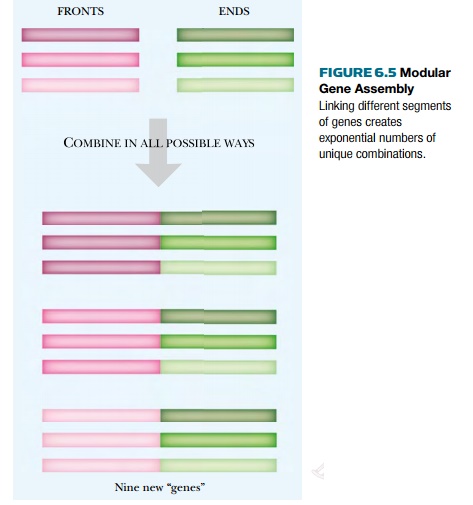Chapter: Biotechnology Applying the Genetic Revolution: Immune Technology
The Great Diversity of Antibodies
THE
GREAT DIVERSITY OF ANTIBODIES
Antibodies are proteins that
recognize and bind to alien molecules. Because there are an almost infinite
variety of possible alien molecules, a correspondingly vast number of different
antibody molecules are needed. The amino acids making up protein molecules can
certainly be arranged to give an almost infinite number of different sequences
and, therefore, of different shapes. However, this leads to a major genetic
problem. If a separate gene encoded each antibody protein, this would require a
gigantic number of genes and a vast amount of DNA. Even if all the DNA in the
mammalian genome was coding DNA, it could encode only a few million antibodies,
which is far too few.
The answer is that the immune
system generates a vast array of different protein sequences from a relatively
small number of genes by shuffling gene segments. Instead of storing complete
genes for each antibody, the immune system assembles antibody genes from a
collection of shorter DNA segments. Shuffling and joining these partial genes
allows the generation of an immense variety of antibodies. In Fig. 6.5 this
idea is illustrated using three alternative front ends and three rear ends.
Combining them in all possible ways gives nine different genes. Suppose that we
had 10 different front, middle, and end segments. These could be combined to
give 10 × 10 × 10 = 1000 variants. This is closer to what
really happens with antibody genes. Note that generating 1000 different
proteins in this way would require only 30 segments of coding DNA to be stored
on the chromosomes.

The remarkable genetic
economy of the immune system stands in bizarre contrast to the phenomenon of
junk DNA. In mammals, typically 95% or more of the DNA may be noncoding. In
contrast, the immune system is a fascinating example of how massive genetic
diversity can be generated by shuffling relatively few segments of genetic
information. Animals can make billions of possible antibodies from only a few
thousand gene segments.
The detailed genetics of
antibody diversity is a complex issue and is described in textbooks on
immunology. The rest of this chapter discusses those aspects of immunology of
importance to biotechnology. These include antibody structure, the
bioengineering of antibodies, biotechnological techniques that use antibodies,
and finally vaccines. The chapter ends with techniques used to identify and
produce new vaccines, which is a huge biotechnology business.
Related Topics